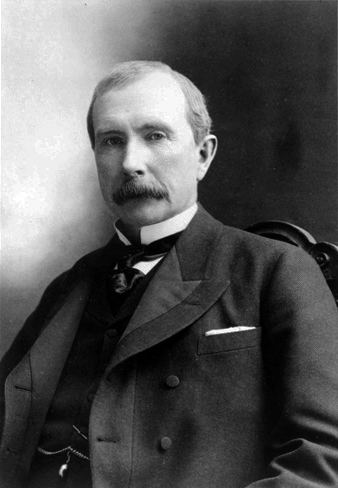 | ||
The list of the wealthiest historical figures gathers published estimates as to the (inflation-adjusted) net-worth and fortunes of the wealthiest historical figures in comparison. Due to problems arising from different definitions of wealth, ways of measuring it, various economic models throughout history, as well as multiple other reasons—this article discusses the wealthiest people in the following separate historical periods: Antiquity, Middle Ages and modern period. Accordingly—because of the previously mentioned difficulties—it is not possible to determine the single richest person in all of history.
Contents
For the modern period, wealth can be measured more or less objectively via inflation adjustment, e.g. comparing the nominal GDP of the United States of the respective periods, and then converting it into contemporary United States dollars. For the medieval and ancient history, comparison of wealth becomes more problematic, on one hand due to the inaccuracy or unreliability of records, on the other due to the difficulty of comparing a pre-industrial economy to a modern one, and especially in the presence of absolute monarchy, where an entire kingdom or empire is considered the ruler's personal property (note that this is also an issue in early modern to modern period, e.g. Davidson (2015) lists Joseph Stalin among The 10 Richest People of All Time for his "complete control of a nation with 9.6% of global GDP").
Marcus Licinius Crassus and Musa I of Mali are considered the wealthiest people in Antiquity and Middle Ages, respectively. Excluding monarchs and autocrats, the wealthiest private individual in the history of capitalism is variously identified as Jakob Fugger (died 1525), of the early modern Fugger family of merchants and bankers, and early 20th-century American entrepreneurs Andrew Carnegie (died 1919) and John D. Rockefeller (died 1937). Frequently, one of these few people is considered to be the richest person of all time, depending on source.
While Rothschild family rose to the status of the wealthiest family of bankers in the 19th century, their wealth was distributed among a number of family members, preventing them from appearing among the wealthiest individuals. The richest among the Rothschilds was the head of its English branch—Nathan Mayer Rothschild—the richest person of his time. Bernstein and Swan in All the Money in the World (2008) mention the top three richest Americans ever—all tycoons of the Gilded Age—respectively: John D. Rockefeller, Andrew Carnegie and Cornelius Vanderbilt; Henry Ford was ranked only 12th.
According to Close (2016), the wealthiest woman in history of capitalism, excluding monarchs, is L'Oréal heiress Liliane Bettencourt, whose net worth was at $40.7 billion in 2015. Including monarchs, he mentions Empress Wu for Antiquity, Isabella of Castile for Middle Ages, and Catherine the Great for modern history.
Early modern to modern period
Listed individuals have the lowest net worth estimate of at least 100 billion in 2010 USD. Therefore, it excludes figures such as Andrew W. Mellon, Richard B. Mellon, Stephen Van Rensselaer, A.T. Stewart, Heshen, J.P. Morgan, and others.
Middle Ages
Absolute rulers or conquerors are sometimes listed for the territory they controlled rather than for their immediate personal wealth (Davidson (2015) for TIME.com listed Akbar I, Genghis Khan and Emperor Shenzong of Song for their imperial possessions, while Alan Rufus is listed for his immediate possessions within the feudal system of Norman England).
Antiquity
For Classical Antiquity, even more than for the High Middle Ages, the definition of personal wealth becomes difficult to compare with the modern period; especially in the case of divine kings, where an entire empire might be considered the personal property of a deified emperor.
